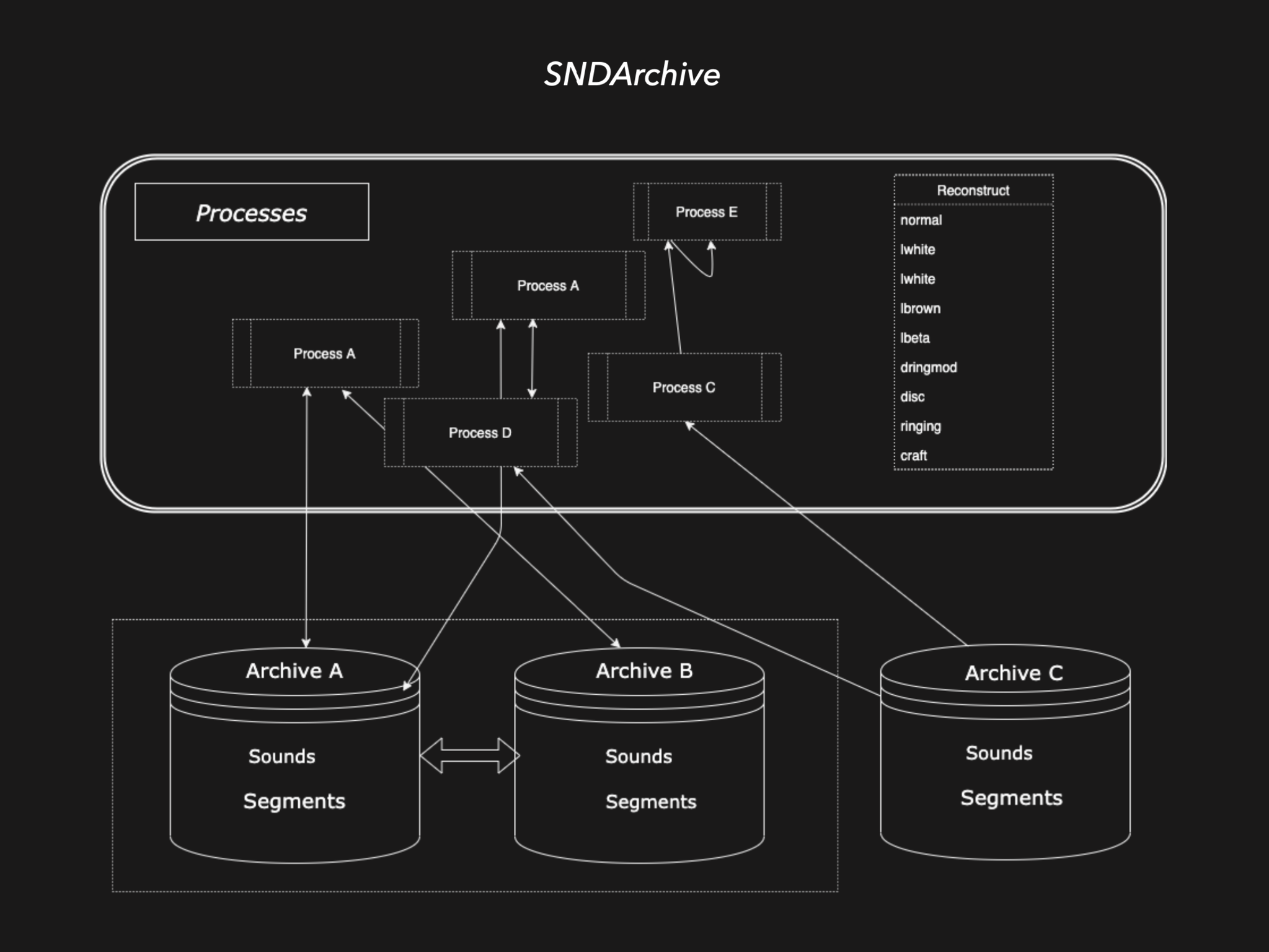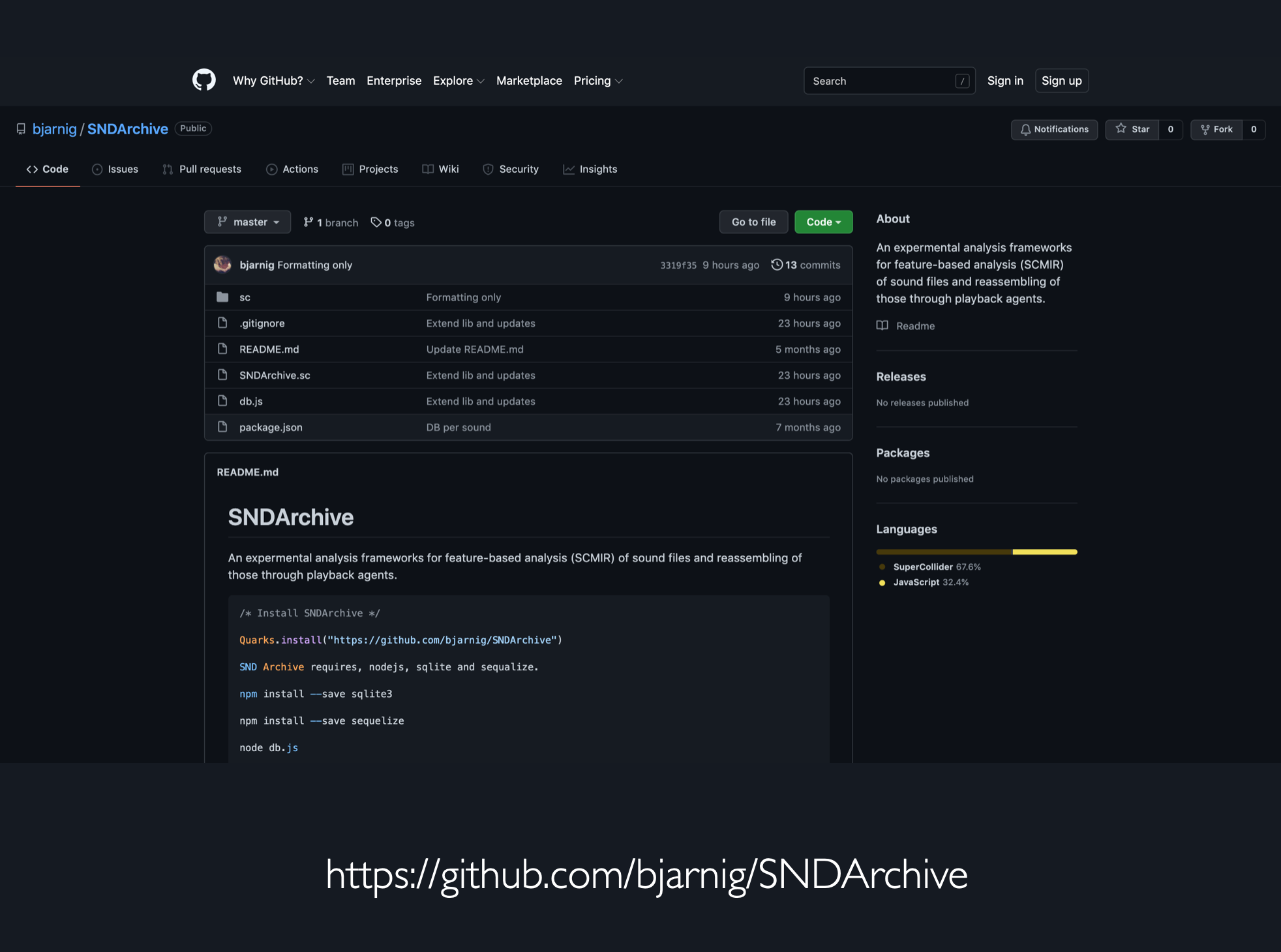SND Archive
Experimentation with sound analysis on large audio collections led to the development of a custom compositional system named SNDArchive. Its primary function was to analyse sounds, offering normalised ranges for the attributes utilised in the analysis process. The analysis results would be stored in a database that could be queried once the analysis was done. The dataset then forms an archive that can be further explored and researched. The purpose was to discover aspects of the material that I had not understood before. For example, I could build an archive from folders on a hard drive and then access their loudness or analyse pitch as a number from 0.0 to 1.0. In addition to analysing sounds, the sounds could also be split into segments that would be analysed in the same way. This allowed for many features, such as grouping high-frequency segments of a group of sounds, or playing all sounds in a folder in a sequence based on perceived timbral centre. I experimented with numerous ways of querying the archive. These operations became part of the codebase and can be further used by me or others. Since the database used follows a standard SQL design, it is also easy to create custom queries using the well-known format of SQL queries.
Applying the attitudes of data science meant to compose by querying the database. To ask questions or make queries based on data properties of the set as a whole. The SNDArchive system further allowed me to recompose and combine sound parts based on different dimensions discovered through offline analysis processes. My task then became to make queries and selections on top of sound directories and choose how they would be played back. The music emerges through processes that interpret the sound or sound segments, transforming them or developing synthetic sounds based on their properties. The idea is to create methods for engaging with the sound archive, to review it from a different angle or to reveal previously unknown aspects of material already loaded with meaning.

